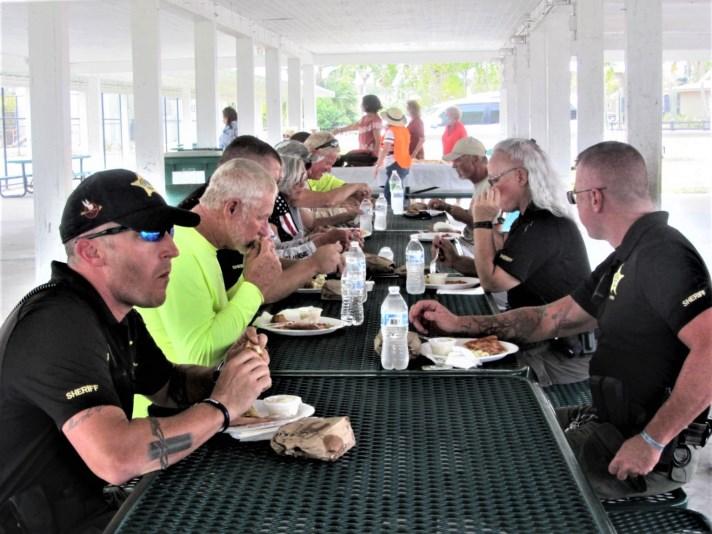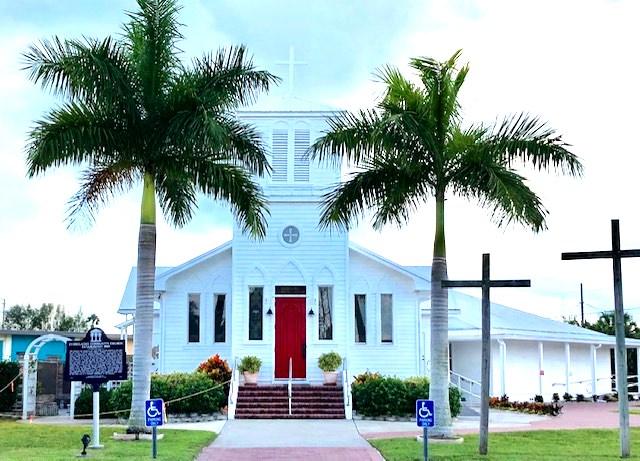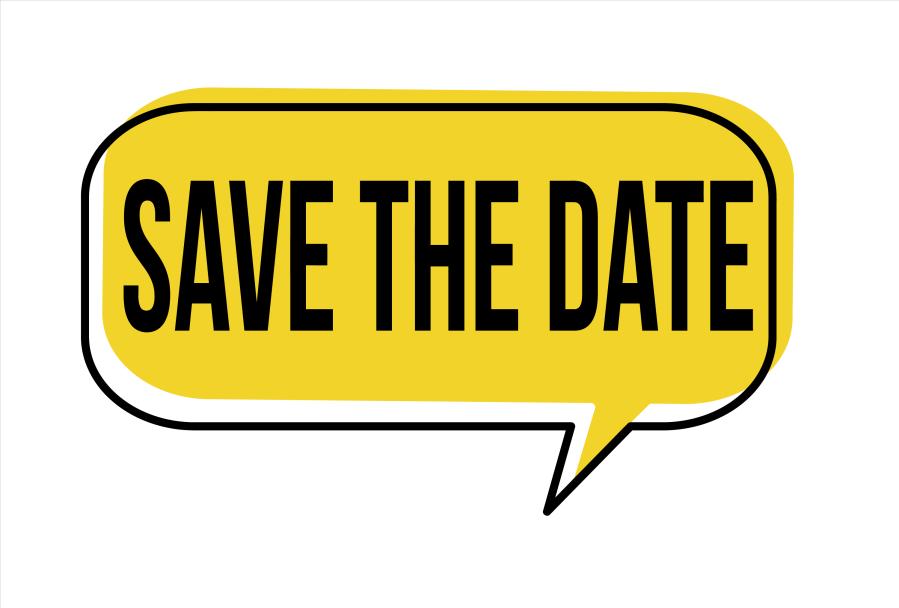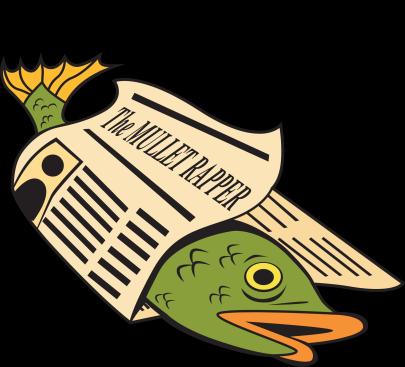
12 minute read
School News
SAWFISH NEWS by Tonya Wiley, Havenworth Coastal Conservation ESA listing anniversary for smalltooth sawfish in the U.S.
239-695-2682 We are Open Please Call for Hours
Advertisement
The population of smalltooth sawfish in the United States experienced a significant decrease in numbers and distribution during the 20th century due to overfishing, habitat loss, and limited reproduction. Given the decline, NOAA Fisheries listed the U.S. population of smalltooth sawfish as an endangered species under the Endangered Species Act eighteen years ago on April 1, 2003. The smalltooth sawfish became the first fully marine fish and first elasmobranch (sharks, skates, and rays) protected by the U.S. Endangered Species Act.
The goal of the Endangered Species Act listing is to recover the population to the point that it no longer needs the protections afforded by the Act. A recovery plan for smalltooth sawfish in the U.S. was published in 2009 and recommends specific steps to recover the population, focusing on (1) educating the public to minimize human interactions with sawfish and any associated injury and mortality, (2) protecting and/or restoring important sawfish habitats, and (3) ensuring sawfish abundance and distribution increase. For smalltooth sawfish recovery means ensuring the long-term viability of the species in the wild through substantial increases in both abundance and range. At the time of the listing in 2003 scientists knew little about the biology, ecology, and population dynamics of smalltooth sawfish. The recovery plan identified actions and research goals aimed at gaining a better understanding of the species and the population. Over the last 18 years, scientists from multiple agencies, universities, and organizations have collaborated to research the smalltooth sawfish population in the United States. We now know more about their size and age at maturity, the number of young they give birth to, the food they eat, their large- and small-scale movement patterns and habitat use, and their response to a variety of stressors. This research greatly improved our understanding of the species and helped us prioritize the actions needed to reach recovery as quickly as possible.
One of the best ways to monitor the population and track recovery progress is analyzing public sawfish encounters. If you catch or see a sawfish, please share the information with scientists by calling 1-844-4-SAWFISH (1-844-472-9347), visiting www.SawfishRecovery.org, or emailing sawfish@myfwc.com. Sawfish recovery documents are available at https://www.fisheries.noaa.gov/species/ smalltooth-sawfish. A video looking at smalltooth sawfish conservation and recovery in the United States is available at https://www.youtube.com/watch?v=NSRWUjVU3e8&t=3s.
Tax-deductible donations to help us continue our mission to promote the sustainable use and conservation of marine resources through research, outreach, and education can be made at https://havenworth.wedid.it/. Photo of Sawfish by Tonya Wiley.




www.captjohnhand.com

First Baptist Church
Knowing Him and making Him known!
416 School Drive / P.O. Box 550 Everglades City, FL 34139 Call Us:(239) 695-3871
All-ages Sunday School: 9:45 a.m. Sunday Worship: 11:00 a.m. & 6:00 p.m. Wednesday Worship: 6:00 p.m.
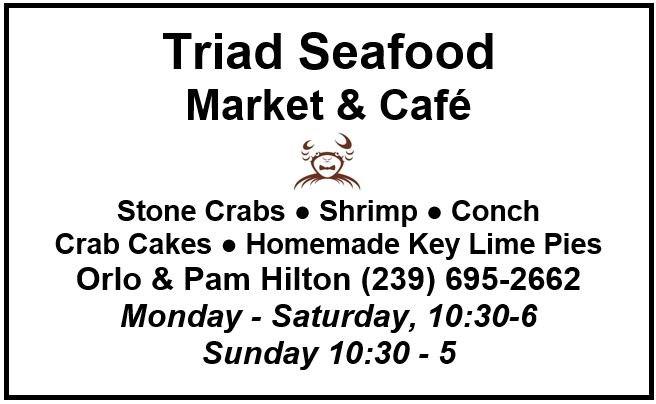
At Win-Car Hardware We Have Just About Everything Unique Apparel, Nav Charts.
Fishing Tackle, Camping, Biking, Hiking, Gifts, Books, Souvenirs, Marine Hardware, Stainless & More!
209 Collier Ave, Everglades City M-Sat 8:30 am - 5 pm. 239-695-3201 Open Daily: 10:30 am – 5:00 pm
Standard Rooms Balcony Rooms
DAILY WEEKLY MONTHLY
102 E. Broadway Everglades City, FL For Reservations: 239-695-1011

Swallow-tailed Kite (Elanoides forficatus) Other names: none / Status: FL=stable, but endangered in South Carolina, IUCN=LC / Length: 19-25 in. (46-64 cm) / Wingspan: 48 in. (122 cm) / Weight: 13-21 oz (.37-.60 kg) / Life span: to 12 years / Nests: throughout Florida and southern Alabama and Mississippi during the summer / Found: All Counties, coastal, near coast, mainland / Months found: JFmamjJASOND (lower case indicates nesting season) Note: The swallow-tailed kite visits South America from November through February. The swallow-tailed kite, like the magnificent frigatebird, is an impressive bird to witness in flight. In fact, you are most likely to spot and identify this bird when it is soaring high above. With its pure white body, large blacktipped wings and deeply forked black tail, this bird resembles an enormous, snowy barn swallow. Unlike most of the migratory birds that arrive in Florida, the swallow-tailed kite comes up from Central and South America during the summer. In effect, Florida is its northern breeding grounds. Once a common nesting bird as far north as Minnesota, the swallow-tailed kite has suffered from extensive habitat loss
There is a small resident nesting population at Corkscrew Swamp on the mainland, and more than likely some of the birds found flying over Lee County originate from there. They predominantly eat flying insects including dragonflies, bees, and beetles but while in flight will also pick off snakes, crickets, cicadas, and small birds from the canopy top. A skilled flyer, the swallow-tailed kite can turn its tail feathers almost 90 degrees, allowing it to make sharp turns and quick dives. Its only longterm threat is habitat loss, although some efforts are under way to reintroduce the kite into its former northernmost ranges.
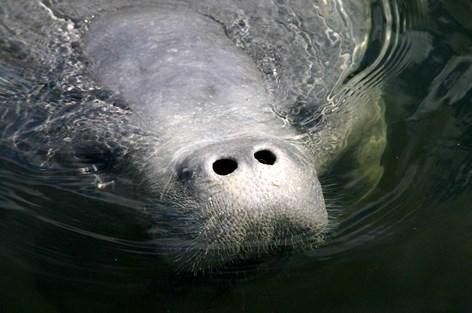
Charles Sobczak is an author and photographer that lives on Sanibel Island. His books are available on Amazon, and other online booksellers.
The Florida Fish and Wildlife Conservation Commission (FWC) is reminding anyone on the water to slow down and look out for manatees while boating in Florida this spring. As water temperatures warm, manatees naturally disperse from their winter habitats, traveling to other areas of the state and beyond. Manatees are leaving their winter refuges and are more likely to be in rivers, canals and nearshore waters. Florida boaters are also enjoying the season, so it is crucial to stay alert and avoid manatees while traveling through Florida’s waterways.
“This year, especially along the east coast, it is critical that people watch for manatees when on the water,” said Ron Mezich, Imperiled Species Management section leader. “With warmer weather, manatees will begin to disperse into open water, heading to a variety of coastal and freshwater habitats containing more ample food sources.”
From April 1 through Nov. 15, seasonal manatee zones require boaters to slow down in certain areas to prevent manatees in their summer habitats from being injured or killed by motorboats or personal watercrafts. Boat strikes continue to be a major threat to Florida manatees. In 2020, FWC and partners rescued 29 manatees injured from watercraft collisions, and more died because of watercraft impacts. FWC law enforcement officers are on patrol in state waters to inform boaters of the seasonal manatee speed zones and take appropriate enforcement actions. Boaters are reminded to abide by the regulatory signs they see on the water.
Manatees can be difficult to detect when they are underwater, so it is important for operators of boats and personal watercrafts to be vigilant. You can help protect manatees by following these simple guidelines: • Wear polarized sunglasses to help spot manatees. • Avoid boating in shallow areas to prevent damaging
seagrass and to avoid resting and grazing manatees.
• Look for large circles on the water, also known as manatee
footprints, indicating the presence of a manatee below.
• Look for a snout sticking up out of the water. • Follow posted manatee zones while boating.
Physically helping a stranded manatee may cause it more harm. Instead, report injured, distressed, sick or dead manatees to the FWC’s Wildlife Alert Hotline at 888-404-FWCC (3922) or by dialing #FWC or *FWC on a cellphone so trained responders can assist.
Resources for boaters, educators and other interested members of the public are available at MyFWC.com/Manatee. mammals.
Alert Hotline at 888-404-FWCC, www.myfwc.com

Parkway Motel & Marina
(239) 695-3261
Rental Rooms, Efficiencies & 2/2 Cottage
1180 Chokoloskee Dr., Chokoloskee, FL www.parkwaymotelandmarina.net
Valvtect Marine,
Rec 90 gas at the dock
Dock water & electric Boat lift, Ice
Everglades City School News A Message From Principal Dr. Cherie Allison
Building a Community of Kindness is a great slogan but what does it actually mean? We all know we should be kinder towards others and ourselves but how does that play out in a school community? As a Leader in Me School we strive to instill the 7 Habits into each of our students. The Leader in Me Program helps to create a common language built on the leadership skills found in Steven R. Covey’s book, The 7 Habits of highly effective people. The 7 Habits are as follows; • Habit1: Be Proactive® • You’re in Charge • Habit2: Begin With the End in Mind® • Have a Plan • Habit3: Put First Things First® • Work First, Then Play • Habit4: Think Win-Win® • Everyone Can Win • Habit5: Seek First to Understand, Then to Be Understood® • Lis-
ten Before You Talk
• Habit6: Synergize® • Together Is Better • Habit7: Sharpen the Saw® • Balance Feels Best
What we have found though is none of these strategies are possible if we do not focus on being kinder to ourselves and to others and here at EVG it has become contagious!
Last month Everglades City, 45 year teaching veteran, Mr. Tribble worked with his Everglades City art classes and painted a heart in the middle of the school courtyard. Every student dabbed their palms in paint and then put their hand print in the heart. Mr. Tribble talks a lot to the students about kindness and having a big heart for each other. Soon enough, chalk sayings started to appear near the heart saying things like, “Be kind to everyone, even meanies because they need it more.” Soon after 5th grade student Jada Stokes was seen with sticky notes posting kind sayings on campus. Her notes would say things like, “Be you because you are great!” Next thing you know the students at the afterschool program worked with Ms. Skylar Rosas (afterschool director) playing “kindness ball” where students played catch with each other and before throwing the ball said something kind to the recipient. The students made sure everyone heard and said something kind. EVG thanks Mr. Tribble, Jada Stokes, Ms. Rosas and the students and teachers of Everglades for making kindness contagious. But it doesn’t end there. Even the smallest of our kids has gotten in on the act.
Their smiles beam through their masks as the Pre-K class completed their Kindness Chain! They are holding 100 links to the chain. Each one represents an act of kindness done by one of the students, whose name is written on that link. All classmates participated, so they learned how to build a kinder community with simple tasks. What a great lesson to learn at a young age! Ms. Clark has done an amazing job teaching these character traits to our littlest gators. It is true the Leader in Me program is thriving one student at a time at EVG!
“Average” Atlantic Hurricane Season to Reflect More Storms
Higher Average Based on Newest 30 Year Trend By NOAA.gov
Beginning with this year’s hurricane season outlooks, NOAA’s Climate Prediction Center (CPC) will use 1991-2020 as the new 30-year period of record. The updated averages for the Atlantic hurricane season have increased with 14 named storms and 7 hurricanes. The average for major hurricanes (Category 3, 4 or 5) remains unchanged at 3. The previous Atlantic storm averages, based on the period from 1981 to 2010, were 12 named storms, 6 hurricanes, and 3 major hurricanes. NOAA is updating the set of statistics used to determine when hurricane seasons are above-, near-, or below-average relative to the climate record. This update process occurs once every decade.
“This update allows our meteorologists to make forecasts for the hurricane season with the most relevant climate statistics taken into consideration,” said Michael Farrar, director of NOAA’s National Centers for Environmental Prediction. “Our work illustrates the value of NOAA’s investments in nextgeneration technologies to capture the data that underpins our outlooks and other forecast products. These products are essential to providing the public and local emergency managers with advance information to prepare for storms, and achieving NOAA’s mission of protecting life and property.”
The increase in the averages may be attributed to the overall improvement in observing platforms, including NOAA’s fleet of next-generation environmental satellites and continued hurricane reconnaissance. It may also be due to the warming ocean and atmosphere which are influenced by climate change. The update also reflects a very busy period over the last 30 years, which includes many years of a positive Atlantic Multi-decadal Oscillation, which can increase Atlantic hurricane activity.
“These updated averages better reflect our collective experience of the past 10 years, which included some very active hurricane seasons,” said Matt Rosencrans, seasonal hurricane forecaster at NOAA’s Climate Prediction Center. “NOAA scientists have evaluated the impacts of climate change on tropical cyclones and determined that it can influence storm intensity. Further research is needed to better understand and attribute the impacts of anthropogenic forcings and natural variability on tropical storm activity.”
For the Eastern Pacific and Central Pacific basins the averages over the 1991 - 2020 period do not change. The Eastern Pacific basin will remain at 15 named storms, 8 hurricanes, and 4 major hurricanes. The Central Pacific basin will maintain an average of 4 named storms, 3 hurricanes and 2 major hurricanes.
NOAA will issue its initial seasonal outlook for the 2021 hurricane season in late May. The Atlantic hurricane season officially runs from June 1 through Nov. 30.

The Mullet Rapper Supports the Everglades Community and School Each year, The Mullet Rapper hosts plant sales, and other events, to raise money for Everglades City School. Please help us support our local children by attending one of our school fundraiser events!

Shop Amazon and Give to a Local Charity at No Extra Cost to You. Here’s How - in Just a Click! (This can be done all year long)
If you shop on Amazon, at no additional cost to you, you can support a local charity. Three (that we have been made aware of) have been set up for charities in the Everglades area. All you need to do is click on the link and accept the charity and Amazon does the rest. Below, the links are provided:
Everglades Society for Historic Preservation: smile.amazon.com/ch/20-2229534
Everglades Lions Foundation: https://www.amazon.com/b? node=15576745011
Everglades Community Church https://smile.amazon.com/ch/22-3934843
If you have a charity that is set up on Amazon, let us know so we can promote the link in the Mullet Rapper!
Contact us by email at mulletrapper@gmail.com Call us at: 954-662-7003





Solution to April 3, 2021 Puzzle


